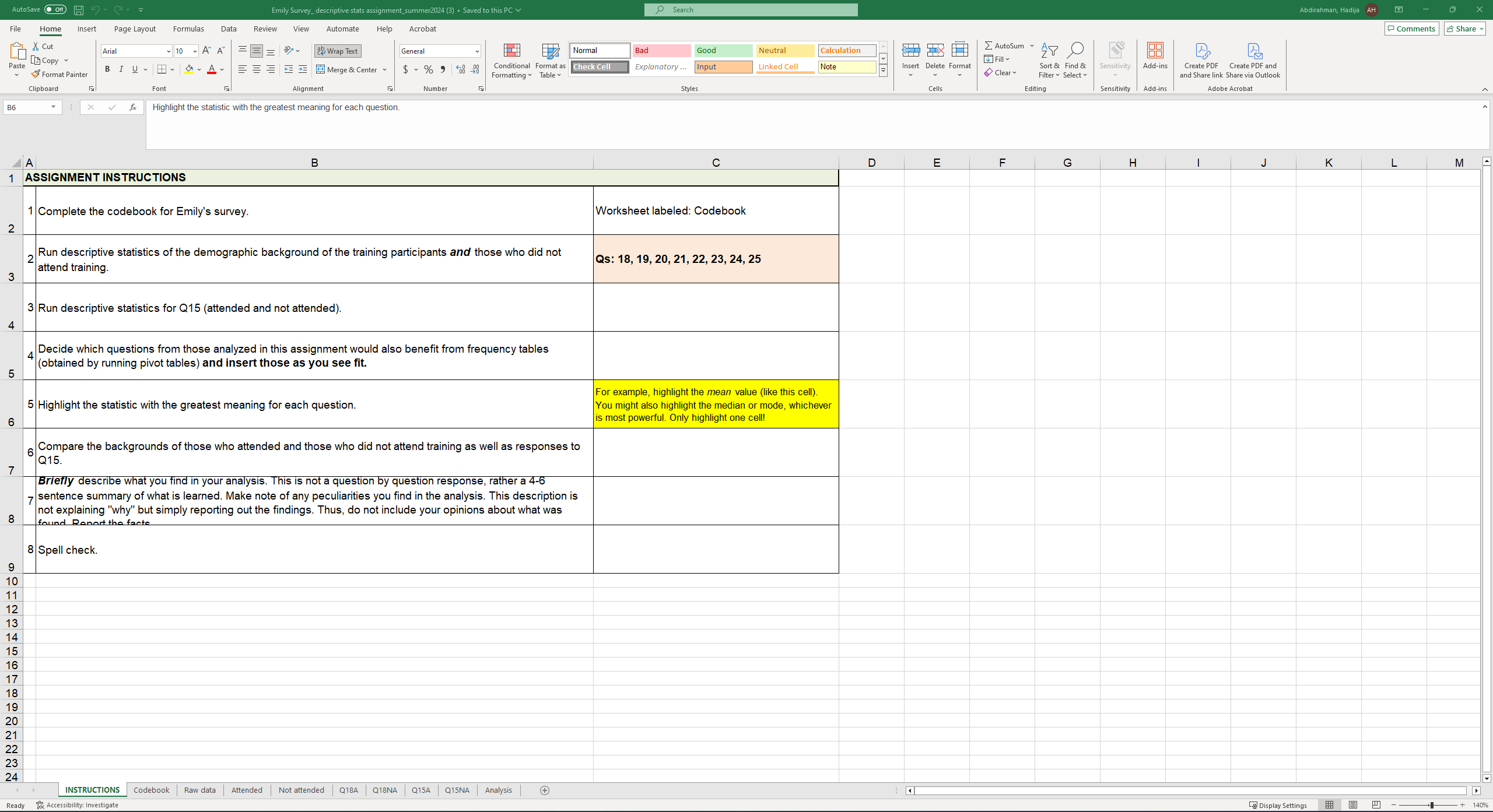Question
For this assignment, use Excel to run descriptive statistics (and frequencies/pivot tables) using Emily's survey data Download Emily's survey data and complete an analysis of
For this assignment, use Excel to run descriptive statistics (and frequencies/pivot tables) using Emily's survey data Download Emily's survey data and complete an analysis of demographic data for those who attended training and those who did not. A short narrative will be included in your assignment submission.
You willgenerate descriptive statistics for the demographic variables and determine which questions may benefit from a frequency table.See instructions in the Excel file as well as the demo video.
The assignment data file includes a number of tabs:
- Instructions. Outlines the expectations for the assignment.
- Codebook. You will complete the codebook following the examples provided earlier in the course. Review these examples so you appropriately label the variable name which is much shorter than the description.
- Raw data. This is the raw data file of all responses to Emily's survey.
- Attended. This worksheet includes data for only those who attended training.
- Not attended. This worksheet includes data for those who DID NOT attend training.
- Q18A. In this worksheet, you can run descriptive statistics for the variable AGE for those who attended training.
- Q18NA. In this worksheet, you can run descriptive statistics for the variable AGE for those who DID NOT attend training.
- Analysis. In the box provided, provide a brief analysis of what you notice when comparing demographics and responses to Q15 from those who attended and did not attend training.
- Q15A. In this worksheet, you can follow along in my demo to run descriptive statistics and a frequency table for responses to Q15 from those who attended training.
- Q15NA. In this worksheet, you can run descriptive statistics and a frequency table for responses to Q15 from those who DID NOT attend training


Step by Step Solution
There are 3 Steps involved in it
Step: 1

Get Instant Access to Expert-Tailored Solutions
See step-by-step solutions with expert insights and AI powered tools for academic success
Step: 2

Step: 3

Ace Your Homework with AI
Get the answers you need in no time with our AI-driven, step-by-step assistance
Get Started


